Ketogenic diets are among the most popular diets around, which has been the case for several years now.
However, if you see these diets in the media or read about them in an article, you’ll probably see the diet being either glorified or demonized.
People are passionate about the diets they promote (or dislike), and bias often creeps into the equation.
The truth is this: like all diets, ketogenic diets may have some benefits, and they may also have some downsides.
This article takes an evidence-based and objective look at what ketogenic diets are, how to implement them, and what foods and meals are compatible with the diet.
Following this, we’ll take an in-depth look at what the scientific literature shows about the diet and its potential benefits and downsides.
What Is a Ketogenic Diet?
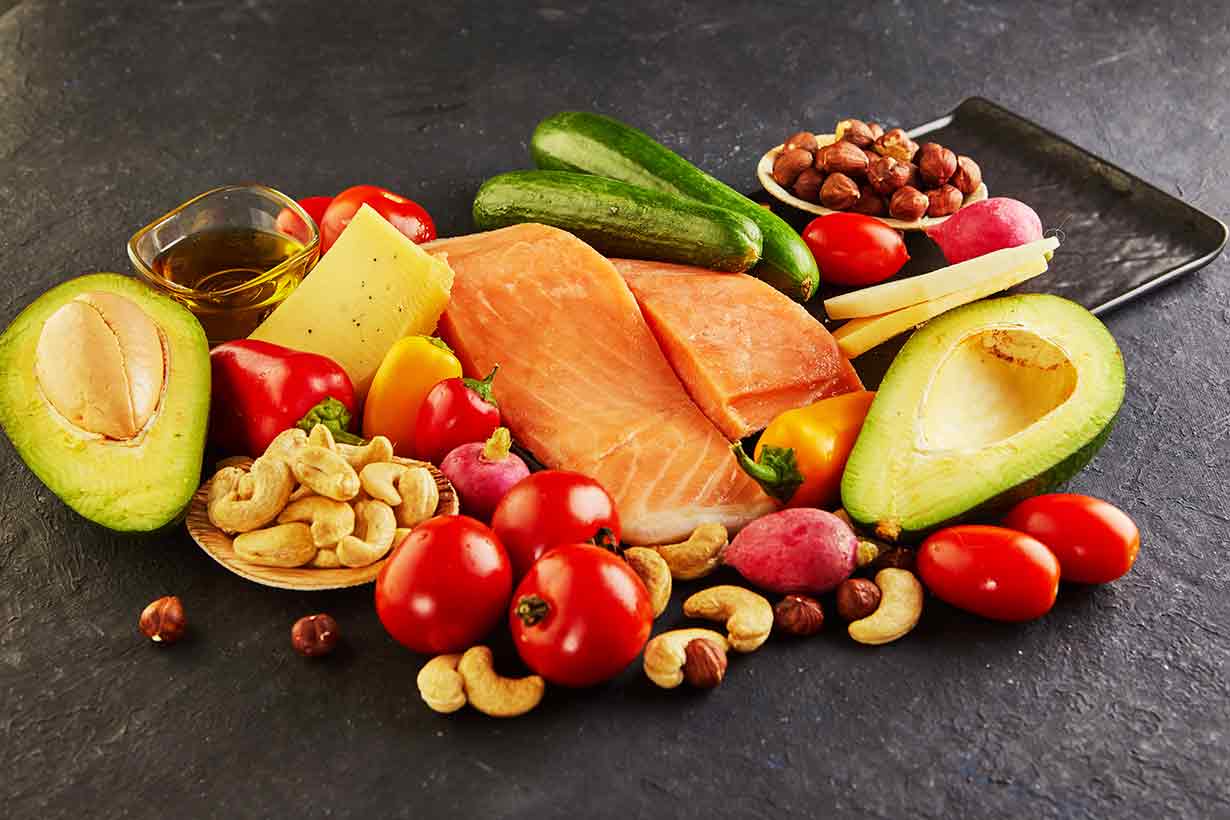
Ketogenic diets are also known by the name ‘keto’ for short, and they involve strictly limiting dietary carbohydrate intake. However, accurately describing a ketogenic diet very much depends on the specific definitions we are using.
Historically, humans have likely consumed ketogenic diets during certain periods of history, dependent on the locale and the specific time period, but the diet was first mentioned by name in the 1920s.
During this decade, the ketogenic diet was introduced as a potential treatment for epilepsy. This form of the ketogenic diet is sometimes referred to as a ‘classic ketogenic diet’ (or CKD for short). It was a therapeutic dietary intervention characterized by a fat consumption that could be as high as 90% of energy intake (1).
The term ‘ketogenic diet’ was reportedly first used by a highly-regarded diabetes researcher named Russel Wilder (2).
In contrast, the modern and popularized ‘keto diet’ tends to focus more on carbohydrate restriction than absolute fat intake. In this respect, it is quite similar to the Atkins diet that peaked in popularity during the 1990s and early 2000s.
Generally speaking, this modern interpretation of the diet involves high intakes of protein and fat and a low enough carbohydrate intake to enter a state commonly referred to as nutritional ketosis.
Ketogenic diets are a kind of low-carbohydrate diet, but they restrict carbohydrate intake to a very low level.
What Is Ketosis?
Ketosis refers to a physiological state induced by low glucose availability. The cause of this is usually a sustained low carbohydrate intake, but other factors, such as activity level, can also play a role.
The carbohydrate restriction necessary to induce ketosis can vary. That said, an intake lower than 50 grams per day tends to be the approximate ‘upper limit” used by scientists researching ketogenic diets (2, 3, 4).
In this situation, the body’s glycogen levels (stored glucose) deplete to a level that can no longer support energy requirements. At this point, two metabolic processes begin in the body, known respectively as gluconeogenesis and ketogenesis (5, 6).
Let’s break these words down into an understandable format:
Gluconeogenesis: gluc (glucose/sugar) + neo (new) + genesis (formation)
Put simply; gluconeogenesis means the formation of new sugar.
The body can produce glucose from lactate, glycerol, and the amino acids alanine and glutamine in this manner (5).
Ketogenesis: keto (ketone bodies) + genesis (formation)
Ketogenesis refers to the formation of ketone bodies. Ketone bodies are a type of molecule that, like glucose, the body can use for energy, and they are produced in the liver from fatty acids (7).
In other words, ketosis refers to the state in which the body burns fatty acids for fuel rather than relying on glucose.
Some people like to use various ketone meters and sticks (disclosure: affiliate link) to monitor the level of ketones in either their blood, breath, or urine to establish if they are “in ketosis.”
What Ratio of Carbohydrate, Fat, and Protein Do Ketogenic Diets Have?
As mentioned, limiting carbohydrate intake to around 50 grams per day tends to be the main factor for a ketogenic diet.
According to Dr. Stephen Phinney, a prominent low-carb researcher, a well-formulated ketogenic diet should range from a lower limit of 1.2 grams of protein per kilogram of body weight to an upper level of 2.0 grams (8).
Thus, it is really the carbohydrate limit that is most important for those attempting to follow a ketogenic diet. Aside from this, the intake of fat and protein can be variable depending on absolute protein intake.
Based on the aforementioned lower protein limit, a ketogenic diet could feasibly look like any of the following options:
- 10% carbohydrate, 75% fat, 15% protein
- 10% carbohydrate, 70% fat, 20% protein
- 10% carbohydrate, 65% fat, 25% protein
- 10% carbohydrate, 60% fat, 30% protein
- 10% carbohydrate, 45% fat, 35% protein
- 10% carbohydrate, 50% fat, 40% protein
- 5% carbohydrate, 80% fat, 15% protein
- 5% carbohydrate, 75% fat, 20% protein
- 5% carbohydrate, 70% fat, 25% protein
- 5% carbohydrate, 65% fat, 30% protein
- 5% carbohydrate, 60% fat, 35% protein
- 5% carbohydrate, 55% fat, 40% protein
Rather than following some generic advice or “diet rules,” it is better to eat, monitor, and adjust to see which best fits the individual.
Lastly, an all animal-based food diet has become popular over recent years called the carnivore diet.
There is very little research on this diet. However, depending on how you define a ketogenic diet, carnivore-style diets could potentially be classed as a type of keto diet.
Is a Ketogenic Diet a Good Idea?
If you ask someone whether trying a ketogenic diet is a good idea, you will usually get an answer based on a personal opinion.
However, the correct response should consider the individual asking the question, which would ideally look more like this:
- For what reason are you interested in ketogenic diets?
- Do you find it easier to eat well on a carbohydrate-restricted diet?
- What kind of foods do you most enjoy?
- Is a ketogenic diet necessary for your goals?
- Are there any medical issues to be aware of?
- What did you hear about the diet that made you interested in it?
For instance, if someone really enjoys a diet that features a liberal intake of fruit, legumes, and root vegetables, then no, a ketogenic diet won’t be the right fit.
On the other hand, does the individual find it easier to stick to a way of eating that limits carbohydrates? In this case, a lower-carb diet might be worth looking into, with a ketogenic diet being one potential option in that area.
To put it bluntly: ketogenic diets are restrictive, and for this reason, they might not be the right choice for some people.
Finally, it goes without saying that anybody with a medical issue should always speak to their doctor or primary care team before implementing a dietary change.
What Kind of Meals Can You Eat On a Ketogenic Diet?
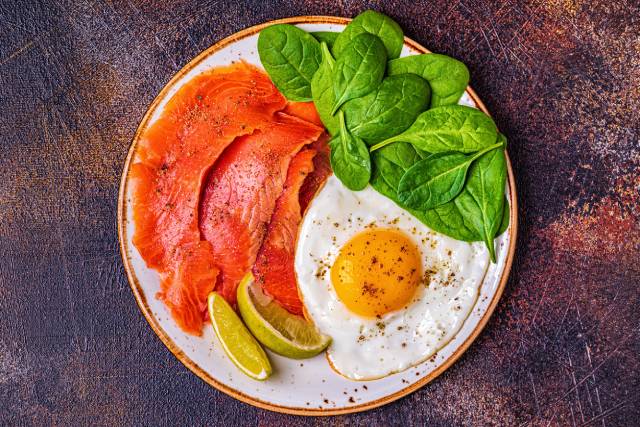
Any specific meal on a ketogenic diet may look completely different depending on the individual and their preferences. On this note, the only real common factor between different meals will be that they contain very few carbohydrates.
Despite popular belief, it is also worth noting that a “keto diet” can include small amounts of higher-carbohydrate foods. This is because there is really no such thing as a “keto food” and it is the daily carbohydrate intake that is the most relevant consideration.
For example, even if someone ate a small amount of brown rice and no other carbohydrates that day, the diet would still likely be “ketogenic” if carbohydrate intake was sufficiently restricted.
That said, it would be expected that a “keto meal” would have around 20 grams of carbohydrate as an upper limit.
Keto Meal Examples
Based on the afore-mentioned 20-gram carbohydrate limit, here are some meals that fit into the modern interpretation of a keto diet.
Next to each meal, you can see the meal’s macronutrient content, with all values being ‘raw weight’ and courtesy of the USDA nutrition database.
- 2 large eggs, 4 oz (112g) salmon, 3 oz (85g) spinach, 3 oz (85-gram) mushrooms, 2 tbsp olive oil [653 calories, 6.6g carbohydrate, 52.2g fat, 40.5g protein]
- 1 cup (210g) cottage cheese, 1 oz (28g) almonds, 1 oz (28g) Cheddar cheese, 1/2 cup (76g) strawberries [506 calories, 20.0g carbohydrate, 32.9g fat, 36.3g protein]
- 4 oz (113g) ground beef, 1 cup (91g) broccoli, 1 cup (128g) diced carrots, 2 tbsp olive oil [594 calories, 18.3g carbohydrate, 43.9g fat, 33.2g protein]
- 1 fillet of mackerel (115g), 3 oz (85g) mushrooms, 4 oz (113g) edamame, 4 oz (113g) spinach, 1 tbsp olive oil [539 calories, 17.2g carbohydrate, 36.1g fat, 41.0g protein]
- 1 cup (252g) cubed tofu, 1/2 cup (121g) canned crushed tomatoes, 1 medium red bell pepper (119g), herbs and spices [467 calories, 20.0g carbohydrate, 31.8g fat, 36.6g protein]
- 3 slices bacon, 2 large eggs, 1 medium grilled tomato, 3 oz (85g) mushrooms [524 calories, 17.9g carbohydrate, 38.5g fat, 31.0g protein]
- Cheese and leek omelet: 3 large eggs, 1 oz (28g) Cheddar cheese, 2 oz (56g) chopped leek, 1 tbsp olive oil [483 calories, 10.1g carbohydrate, 37.4g fat, 26.2g protein]
- 1 oz (28g) Cheddar cheese, 2 oz (56g) prosciutto, six (24g) green and black olives, 1 oz (28g) walnuts, 1 cup of strawberries (152g) [477 calories, 18.0g carbohydrate, 32.9g fat, 27.8g protein]
- 1 tin of sardines canned in olive oil (140g), 1 oz (28g) feta cheese, 3 oz (85g) arugula, 1 cup cherry tomatoes, 1 small red onion (sliced), 1 medium yellow bell pepper (119g) 1 tbsp olive oil, 2 tsp balsamic vinegar [594 calories, 19.2g carbohydrate, 44.8g fat, 30.9g protein]
As shown in the above examples, ketogenic diets can incorporate a broad range of animal-based and plant-based foods. Note: changing the serving quantities is an easy way to adjust the protein provision.
What Potential Benefits Might Ketogenic Diets Have?
Randomized controlled clinical trials involving human participants have demonstrated that ketogenic diets may have several potential health benefits.
However, it is important to note that these effects will differ depending on the quality of the specific diet being followed.
In other words, a diet full of seafood, cheese, nuts, berries, and leafy greens can be called ‘ketogenic.’ In the same way, so can a diet that solely consists of processed meat and deep-fried food.
Diet quality matters.
Here is a summary of research findings on ketogenic diets.
Ketogenic Diets and Weight Loss
Numerous studies have looked into the effects of a ketogenic diet on weight loss.
Some of these studies have also compared very low carbohydrate ketogenic diets to a low-fat control group dietary intervention control group.
Randomized controlled trials have consistently demonstrated that (9, 10, 11, 12, 13, 14, 15):
- Ketogenic diet weight loss interventions are generally successful and mostly lead to weight loss, at least in the short term. The vast majority of studies show significant weight loss during the intervention in a wide range of populations.
- Despite ketogenic diets and low-fat diets both leading to weight loss, short-term weight loss tends to be slightly (but not significantly) higher with low-carb ketogenic diet interventions. However, this weight loss becomes less significant at the 12-month mark, with some clinical trials noting a slight benefit either way and some seeing no difference (16, 17, 18).
Adherence To the Diet Is Key
The scientific literature is clear that it is difficult to achieve and sustain weight loss with any diet in the long-term. All diets are notoriously difficult to adhere to in the long-term, and it is common for individuals to give up their chosen diet and regain lost weight (19).
Unfortunately, this trend is common with ketogenic diets too. Numerous randomized controlled trials show that it is common for carbohydrate intake to increase over the course of longer-term ketogenic diet interventions. This increased carbohydrate intake happens as adherence to the diet falls and weight loss plateaus.
We can see a good example of this in a recent meta-analysis of therapeutic ketogenic diet interventions for patients with epilepsy. This meta-analysis found that over 12 studies featuring 270 participants, the average adherence rate to a ketogenic diet was only 45% (20).
One point to note here is that these individuals weren’t choosing the diet because they wished to enjoy a ketogenic diet way of eating. It was a therapeutic intervention that they may not have had an enthusiasm for.
As this example shows, a ketogenic diet must be the right fit for the individual. If someone enjoys their particular way of eating, they can likely sustain their diet for the long term. On the other hand, if it is a constant struggle to maintain a way of eating, long-term adherence is doubtful.
This is why so many people try various “yo-yo” diets, regain weight, and try a new diet.
The key to a good, sustainable way of eating is a diet that you enjoy.
Additionally, here are some common reasons why people may struggle losing weight with a ketogenic diet.
Alzheimer’s and Cognitive Health
Several studies have examined the potential effects of a ketogenic diet for treating conditions such as Alzheimer’s and wider cognitive health.
A lot of this research has been driven by the fact that Alzheimer’s leads to impaired glucose metabolism in the brain (21).
Since ketogenic diets encourage the body to switch from using glucose to ketone bodies as the main fuel source, researchers have been examining if there may be any potential benefits from the diet for individuals with Alzheimer’s and dementia.
On this note, several small clinical trials have suggested that ketogenic diets may potentially increase the quality of life and cognitive performance of Alzheimer’s patients and older adults with cognitive impairments (22, 23, 24).
However, it should be noted that this is an emerging field of study. Further research in larger populations and over more extensive timeframes is necessary to investigate this area better.
Type 2 Diabetes
Much research has been conducted on very-low-carb ketogenic diets and their potential for helping to treat/manage type 2 diabetes.
Among this research, a recently published meta-analysis of clinical trials investigated the use of ketogenic diets for managing glycemic (blood sugar) control (25).
This review identified that, as a therapeutic intervention, ketogenic diets consistently led to improved blood sugar control without negatively affecting blood lipids/LDL cholesterol. Also, the ketogenic diet tended to outperform control diets in this area (25).
A recent systematic review and meta-analysis demonstrated that low carbohydrate diets appear to have a “greater effect on glycemic control in type 2 diabetes compared with high-carbohydrate diets in the first year of intervention” (26).
Of course, ketogenic diets are not the only valid dietary approach for type 2 diabetes, and different approaches can work equally well. Whether the diet in question drives weight loss seems to be the most important aspect for type 2 diabetes management/remission (27).
Note: It is worth remembering that individuals with type 2 diabetes should always discuss their physician/primary medical team before considering any significant dietary change.
Epilepsy
Ketogenic diets have been used as therapeutic dietary interventions for epilepsy since the early 1900s.
An extensive amount of research supports ketogenic diets for this purpose (28, 29, 30, 31, 32).
Other Medical Conditions
Research is ongoing concerning ketogenic diets and other medical conditions, such as various cancer types (33).
However, the evidence base is lacking, and it does not support any health claims in this area.
It is possible that ketogenic diets may help with certain conditions, and it is equally possible that they may harm. This will remain the case until adequate evidence from human trials is available to either support or contradict the use of ketogenic diets in such areas.
Do Ketogenic Diets Have Any Downsides?
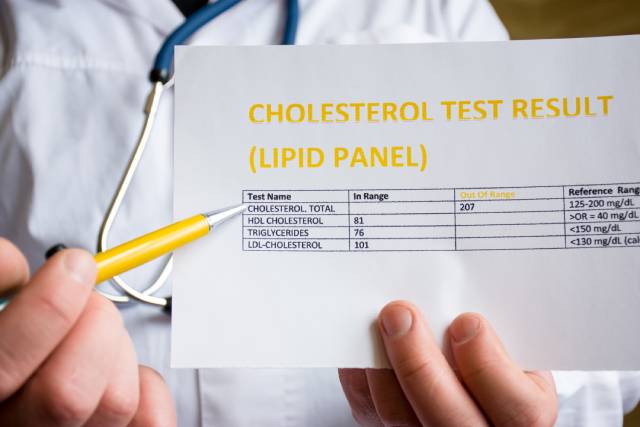
The obvious drawback to ketogenic diets is that they restrict carbohydrate intake, which automatically limits a wide range of (potentially) nutrient-rich foods.
But are there any other concerns above and beyond the carbohydrate restriction?
Three of the most common criticisms of ketogenic diets are listed below:
- “Ketogenic diets may raise LDL cholesterol levels.”
- “The diet lacks dietary fiber.”
- “Ketogenic diets cause ketoacidosis.”
Is there any truth to these criticisms? And if so, is there anything that can be done about them?
Let’s take a look.
Ketogenic Diets, LDL Cholesterol, and Blood Lipids
Ketogenic diets tend to be very high in fat, of which saturated fat can sometimes form a significant proportion.
Certain saturated fatty acids, particularly palmitic acid and myristic acid, can lead to increased LDL cholesterol (LDL-C) levels. Palmitic acid and myristic acid can mainly be found in animal fats like butter as well as palm oil (34, 35).
Despite much debate on the topic, an extensive systematic review and meta-analysis of LDL-lowering interventions demonstrated that “lower achieved LDL-C levels were associated with lower rates of major coronary events” (36).
A Cochrane systematic review of 15 randomized controlled trials also noted that long-term lowering of saturated fat intake helped prevent cardiovascular events (37).
However, ketogenic diets do not necessarily have to raise LDL levels. The diet’s effect on LDL levels appears to be variable, with some human trials suggesting that ketogenic diets can significantly raise LDL, but others showing little effect (38, 39, 40).
On this note, a recent scientific statement by the National Lipid Association, published in the Journal of Clinical Lipidology, noted that these varying effects might depend on “the quality of the diet interventions in the randomized clinical trials” (41).
Specific Foods Have Different Effects on LDL Levels, Thus the Diet’s Effects Are Variable
It is always a sensible idea to check markers of health with a doctor after a significant dietary change, but here are some considerations if LDL levels are a concern:
- Lean cuts of meat and seafood options, including fish and shellfish, will not influence LDL levels in the same way that fattier cuts of meat will (42).
- Randomized controlled trials show that cream and cheese do not raise LDL levels compared to butter (or compared to baseline diet). These foods have an intact milk fat globule membrane (MFGM) that encapsulates the fatty acids; this MFGM is broken in the churning process to produce butter (43, 44).
- Most nuts are compatible with ketogenic diets, and clinical trials suggest that they can lower LDL levels and improve overall cardiovascular health markers (45, 46, 47).
- Seeds and seed products such as flax seeds and psyllium husk can significantly lower LDL levels. This is mainly due to their respective polyunsaturated fat and fiber content (45, 46).
- Polyunsaturated fats and fiber can both, in general, lower LDL levels. This is particularly true for polyunsaturated fats when they are a substitute for saturated fats. These nutrients are found in nuts and seeds and in food such as avocados, which can also lower LDL (47, 48, 49).
In short, the impact of a ketogenic diet on LDL levels will depend on the specific diet being followed and the individual.
As a very simplistic summary:
- Increasing saturated fat and lowering fiber and polyunsaturated fats could be anticipated to increase LDL levels.
- Lowering saturated fat intake and increasing fiber and polyunsaturated fat may lower LDL levels.
- Consuming foods/meals high in both fiber and saturated fat may potentially have a neutral effect. An example of this can be seen with coconut flakes, which are high in saturated fat and fiber yet appear to lower LDL levels (50).
Ketogenic Diets and Fiber
Higher fiber intake is consistently associated with health benefits, including lower mortality, across multiple lines of evidence from extensive observational studies to large human trials (51, 52, 53).
It is a common claim that ketogenic diets lack fiber.
Firstly, it is certainly true that ketogenic diets can be low in fiber. However, it is also very possible to consume large amounts of fiber on such diets.
Here are some high-fiber foods that can fit into a ketogenic diet (the fiber values are for raw weight, and they are sourced from the USDA database):
- Almonds: 12.5g fiber per 100g (54)
- Cocoa powder: 37.0g fiber per 100g (55)
- Artichoke: 5.7g fiber per 100g (56)
- Avocado: 6.7g fiber per 100g (57)
- Blackberries: 5.3g fiber per 100g (58)
- Brussels sprouts: 3.8g fiber per 100g (59)
- Chia seeds: 27.3g fiber per 100g (60)
- Flax seeds: 27.3g fiber per 100g (61)
- Hazelnuts: 9.7g fiber per 100g (62)
- Kale: 4.1g fiber per 100g (63)
- Lupin beans: 37.5g fiber per 100g (64)
- Pecans: 9.6g fiber per 100g (65)
- Psyllium husk: 78g fiber per 100g (66)
- Raspberries: 6.5g fiber per 100g (67)
- Spinach: 2.2g fiber per 100g (68)
Ketoacidosis
Some people claim that ketogenic diets are unhealthy because they “cause ketoacidosis,” but such statements, taken definitively, are largely incorrect.
As previously mentioned, ketosis is a physiological state in which the body starts to burn ketones (fats) for energy instead of glucose.
In contrast, ketoacidosis is a potentially life-threatening condition that occurs when the body doesn’t make enough insulin, and thus ketone levels become abnormally high.
A small amount of insulin is released in healthy people to stop ketone levels from becoming too high. However, individuals with type 1 diabetes do not produce sufficient insulin, and thus poor management of type 1 diabetes can lead to excessive ketone levels, leading to ketoacidosis (69, 70).
However, in healthy individuals following low-carb diets, the production of ketones is “regulated and controlled” and thus should not lead to ketoacidosis (71).
That said, it is worth pointing out that there have been reports of ketoacidosis occurring on carbohydrate-restricted diets in certain population groups:
- Lactating women (72, 73, 74)
- Individuals with type 2 diabetes who were using a class of medicines known as SGLT2 inhibitors (75, 76, 77)
Again, anyone making a significant dietary change (particularly if a medical condition is present) should discuss it with their doctor.
See this guide to ketogenic diets and ketoacidosis for more information.
Other Potential Side Effects To Consider
Starting a ketogenic diet can be difficult due to changes that occur during the first week or so of following the diet. These changes may include losses of water weight as insulin levels drop (and thus electrolytes), and “adapting” to the diet can cause unwanted symptoms.
According to published research, these symptoms may include dizziness, lethargy, lightheadedness, and nausea. These self-reported symptoms tend to last anywhere from a few days to a few weeks (78, 79).
This is not really an area that has been looked at in-depth in the scientific literature. However, individuals reporting such symptoms often report that consuming enough food (calories), water and ensuring sufficient salt intake can help with these side effects.
What Might Followers of Ketogenic Diets Typically Eat?
As previously mentioned, the most important consideration with ketogenic diets is the total carbohydrate intake rather than specific foods.
However, here is a look at foods that people following a ketogenic diet typically eat.
Cooking Fats and Oils
As a source of only fat, all common cooking fats and oils can fit into a ketogenic diet.
Dairy Foods
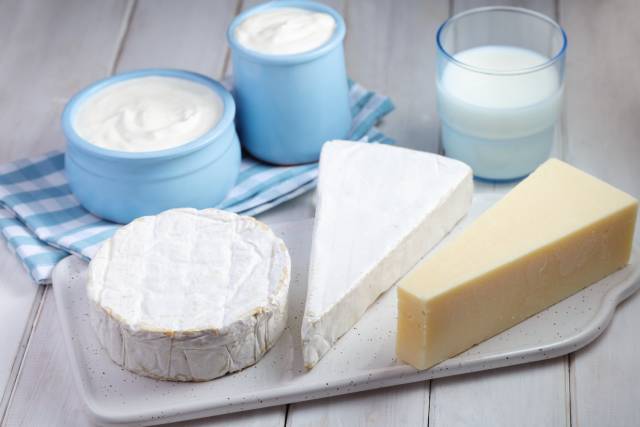
Due to its moderately high carbohydrate content, milk typically doesn’t feature in ketogenic diets.
However, dairy fats like butter and ghee, cream, cheese, and fermented dairy products commonly feature.
| Butter | Cheese |
| Clotted Cream | Cottage cheese |
| Cream | Creme cheese |
| Creme fraiche | Ghee |
| Greek yogurt | Quark |
| Sour cream | Yogurt |
Drinks
Sugar-sweetened beverages are incompatible with ketogenic diets, and typical milk servings tend to be too high in carbohydrates.
The main drinks that fit into the diet are water, tea, coffee, and diet soda. The lowest carbohydrate options are red wine and spirits such as vodka and whiskey for those who drink alcohol.
Light beers are also moderately low in carbohydrates.
| Coffee | Diet soda |
| Dry wine | Herbal tea |
| Light beer | Spirits |
| Tea | Water |
Eggs, Meat, and Poultry
All unprocessed meat and poultry products can fit into a keto diet plan.
Certain processed meat/poultry products, such as pork cutlets and fried chicken, won’t be compatible with the diet due to their carbohydrate content.
Fish
Once again, all fish is compatible with ketogenic diets aside from processed products that use batter/breadcrumbs.
There are countless edible fish, but here are some of the commonly available options.
| Anchovy* | Bream |
| Carp | Catfish* |
| Cod | Flounder |
| Haddock | Halibut |
| Herring* | Mackerel* |
| Monkfish | Salmon* |
| Salmon roe* | Sardines* |
| Swordfish** | Tilapia* |
| Trout* | Tuna** |
*Good source of omega-3
Fruit
Since ketogenic diets require carbohydrate intake to be very low, many common fruits are off-limits.
However, there are plenty of lower-carb fruits that can fit into the diet.
| Avocado | Blackberries |
| Blueberries | Boysenberries |
| Coconut | Cranberries |
| Lemon | Lime |
| Olives | Raspberries |
| Rhubarb | Salmonberries |
| Strawberry | Tomato |
Nuts
Aside from chestnuts, most nuts can fit into a ketogenic diet.
However, nuts with a slightly higher carbohydrate count (such as cashews and pistachios) will need more careful moderation.
| Almonds | Brazil Nuts |
| Cashew nuts | Hazelnuts |
| Hickory nuts | Macadamia |
| Peanuts | Pecan |
| Pili nuts | Pine nuts |
| Sacha inchi | Walnuts |
Seeds
Pretty much all seeds are consistent with a ketogenic diet; they’re all high
| Chia Seeds | Flax seeds |
| Hemp Seeds | Nigella Seeds |
| Poppy seeds | Pumpkin Seeds |
| Sesame Seeds | Sunflower Seeds |
Shellfish and Seafood
| Abalone | Clams |
| Cockles | Crab |
| Eel | Lobster |
| Mussels | Oysters |
| Shrimp | Scallops |
| Sea Squirt | Squid |
Vegetables
Generally speaking, lower-carb options such as cruciferous vegetables and leafy greens should be the focus.
The plants that grow above ground tend to have the lowest carb count, while vegetables growing underground trend toward being higher-carb options.
However, a small amount of below-ground vegetables should be okay if you factor them into your total carb count.
Here are some reasonably keto-friendly vegetable options (out of many).
| Artichoke | Asparagus |
| Beet Greens | Bell Peppers |
| Bok Choy | Brocolli |
| Brussels Sprouts | Cabbage |
| Cauliflower | Celery |
| Chives | Cucumber |
| Eggplant | Green Beans |
| Green Onion | Kale |
| Kohlrabi | Leek |
| Lettuce | Mushrooms |
| Radish | Red Cabbage |
| Rutabaga | Seaweed |
| Spaghetti Squash | Spinach |
| Swiss Chard | Tomato |
| Turnip | Zucchini |
Keto Snack Options
Milk chocolate and potato chips go out the window with a ketogenic diet. However, there are still many “compatible” snack options that you can eat.
Here is a list with a few ideas:
- Berries and yogurt: your choice of berries in a bowl with some yogurt. Or cream if you prefer.
- Boiled eggs: if you’re craving a bite to eat, a boiled egg or two is a satisfying protein-rich snack.
- Celery and cream cheese: Spread some cream cheese on a few stalks of celery. Some alternatives to cream cheese could include peanut butter, harissa, or hummus.
- Cheese: a quick, convenient, and nutrient-rich snack.
- Dark chocolate: the higher the cocoa content, the better. Dark chocolate bars with a cocoa percentage of 85% or more will contain the lowest sugar levels.
- Guacamole salad: mash up some guacamole and add in your ingredients of choice.
- Jerky: meat or fish jerky is a convenient protein-rich snack for a ketogenic diet.
- Nuts and seeds: a handful of nuts provides a good amount of protein, fat, fiber, vitamins, and minerals.
Foods To Limit/Avoid
Due to the nature of ketogenic diets, most high-carbohydrate foods are unsuitable for this way of eating.
Below is a list of the foods and drinks that are incompatible with the diet.
- Beer (most beer except light options)
- Cakes
- Cookies
- Dried fruit (a small amount is OK, but the carbohydrate levels will quickly add up)
- Fruits high in carbs (banana, mango, papaya)
- Fruit juice
- Grain products (bread, cereals, pasta)
- Legumes (such as beans and lentils)
- Milk (a small amount is OK)
- Sugary foods and sugar-sweetened products in general
- Sweet wines/sugary alcohol
- Tubers such as parsnips, potatoes, and sweet potatoes
- Whole grains (such as barley, oats, and wholewheat)
As shown above, ketogenic diets cut out many foods that, in excess, are associated with poor health outcomes, such as refined carbohydrates and sugar (80, 81, 82, 83).
In contrast, ketogenic diets also restrict some foods associated with health benefits, such as higher-carbohydrate fruit, legumes, and genuine whole grains (84, 85, 86, 87).
Final Thoughts
Research over recent years is clear that ketogenic diets can have various benefits, ranging from weight loss to type 2 diabetes management.
Despite this, the effects of the diet are often over-hyped and exaggerated, and it is just one of many suitable dietary interventions for such conditions.
Lower carbohydrate diets that allow a more moderate carbohydrate provision can be equally effective, as can other dietary patterns.
For those who don’t mind the level of carbohydrate restriction required and enjoy low-carb foods, a well-formulated ketogenic diet might be worth investigating.
Lastly, it is worth pointing out that many of the foods that fit with ketogenic diets are not staple foods, thus the diet can be expensive.
This article on nutrient-rich yet affordable foods provides some budget-friendly food choice ideas, many of which can fit into a ketogenic diet.

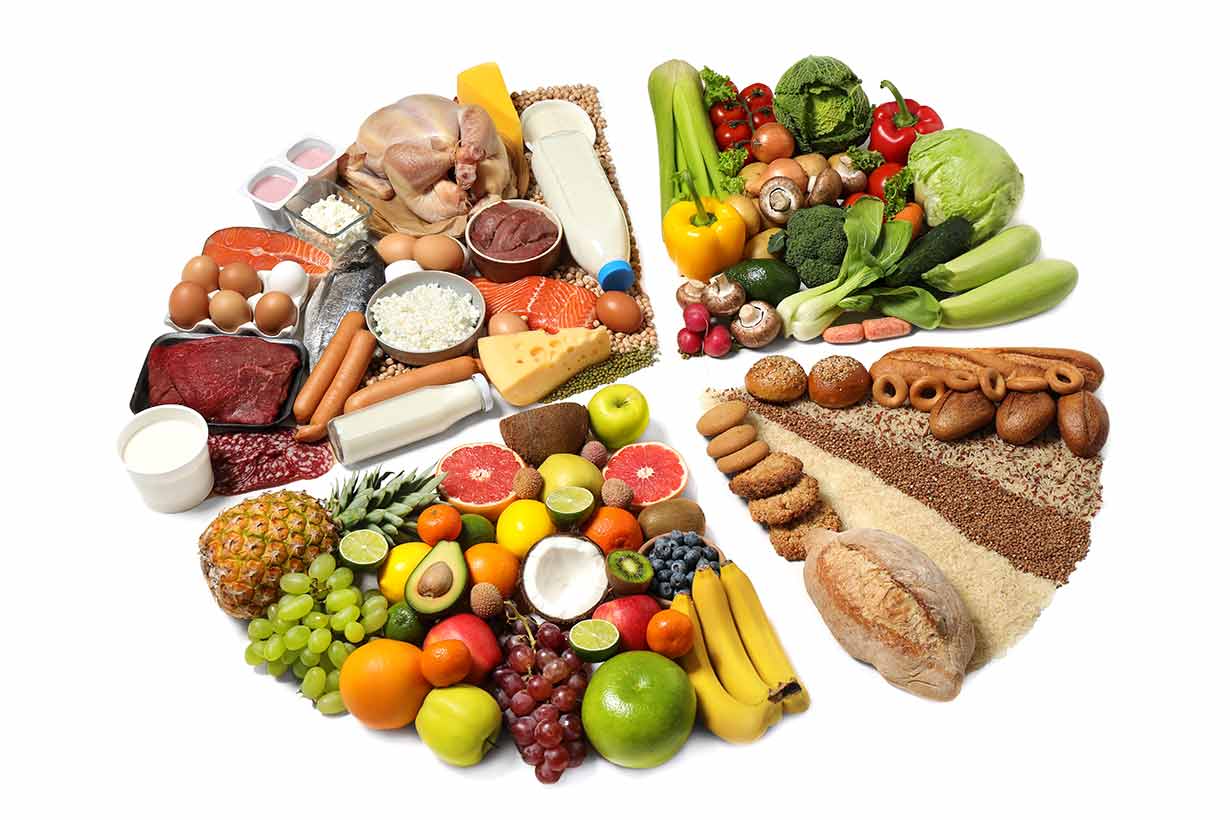

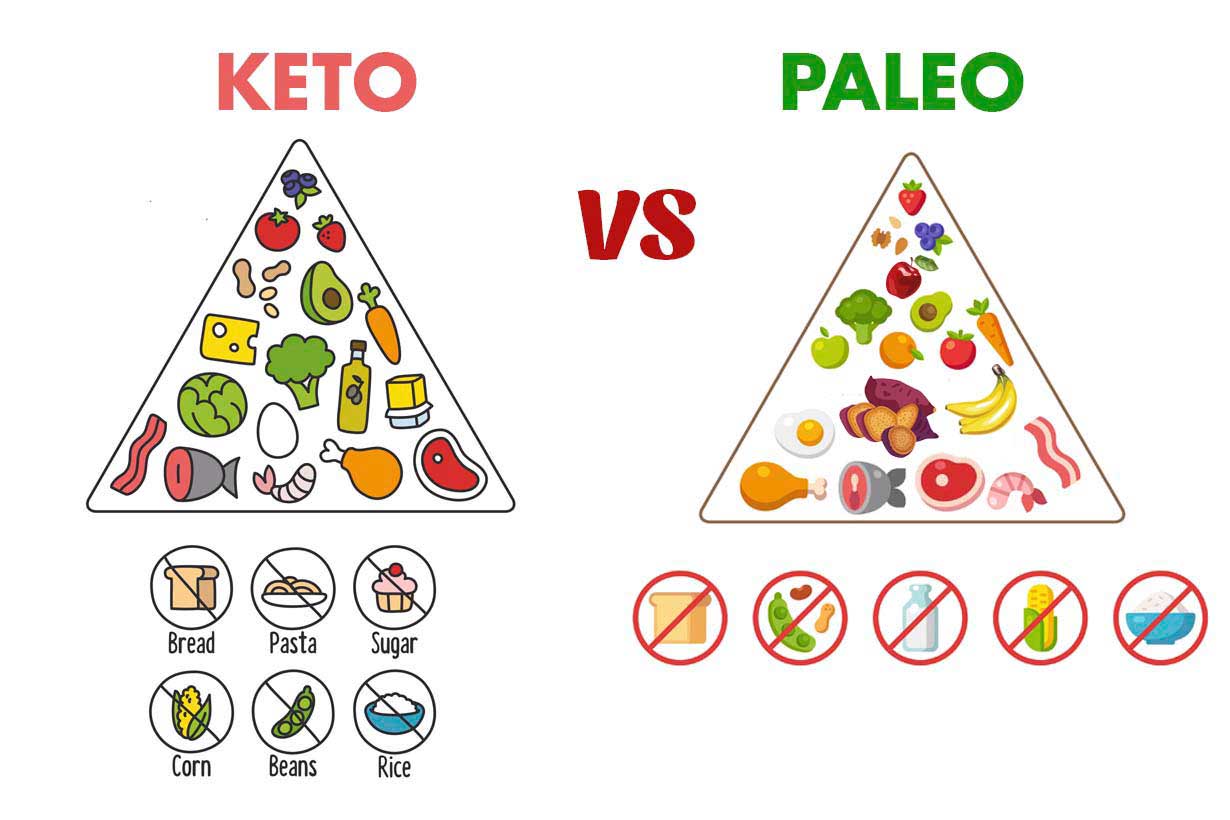
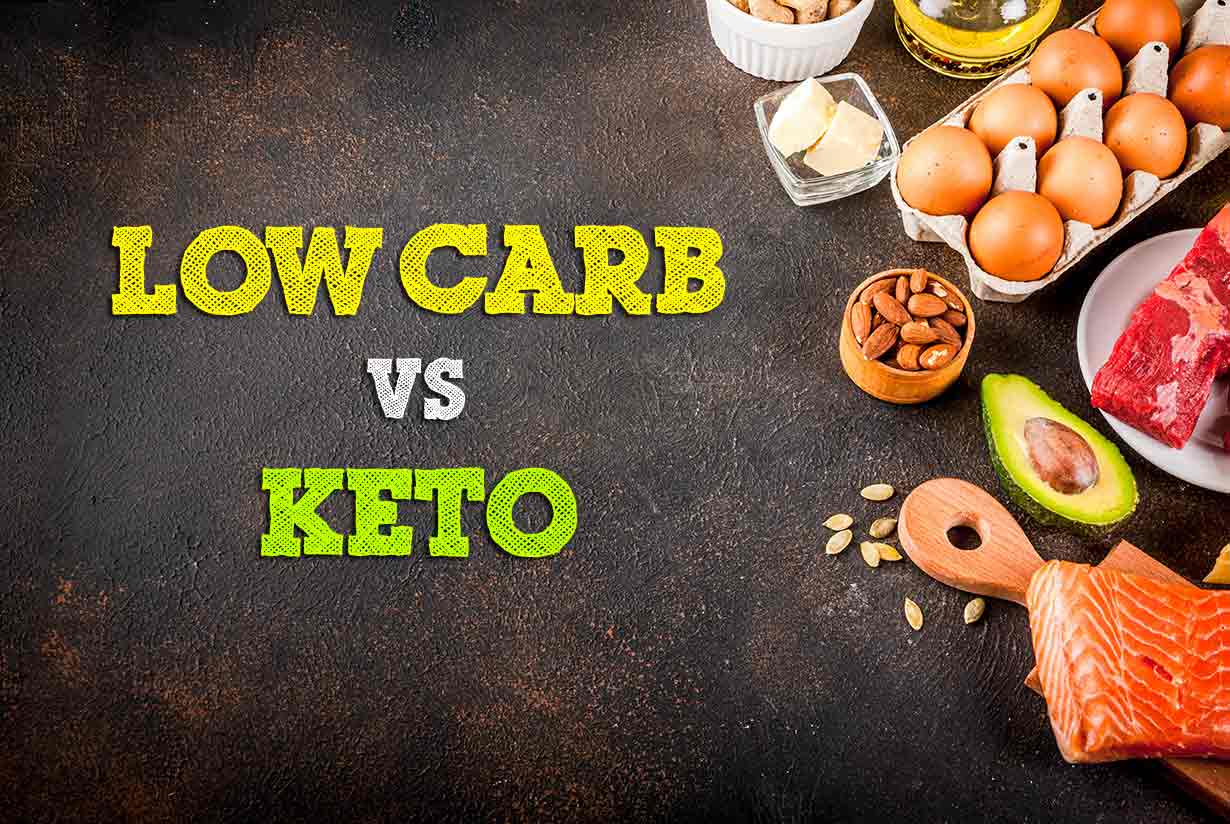
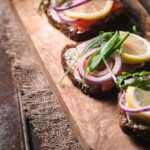
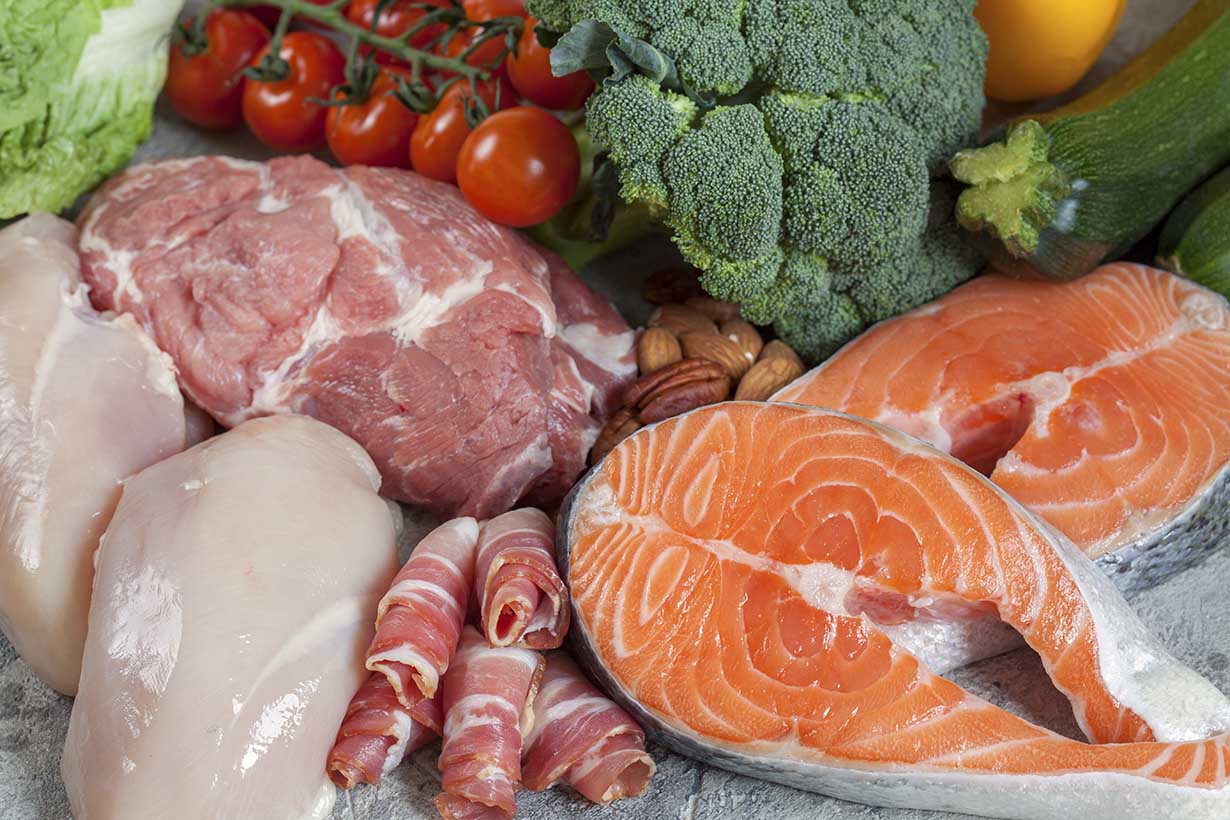
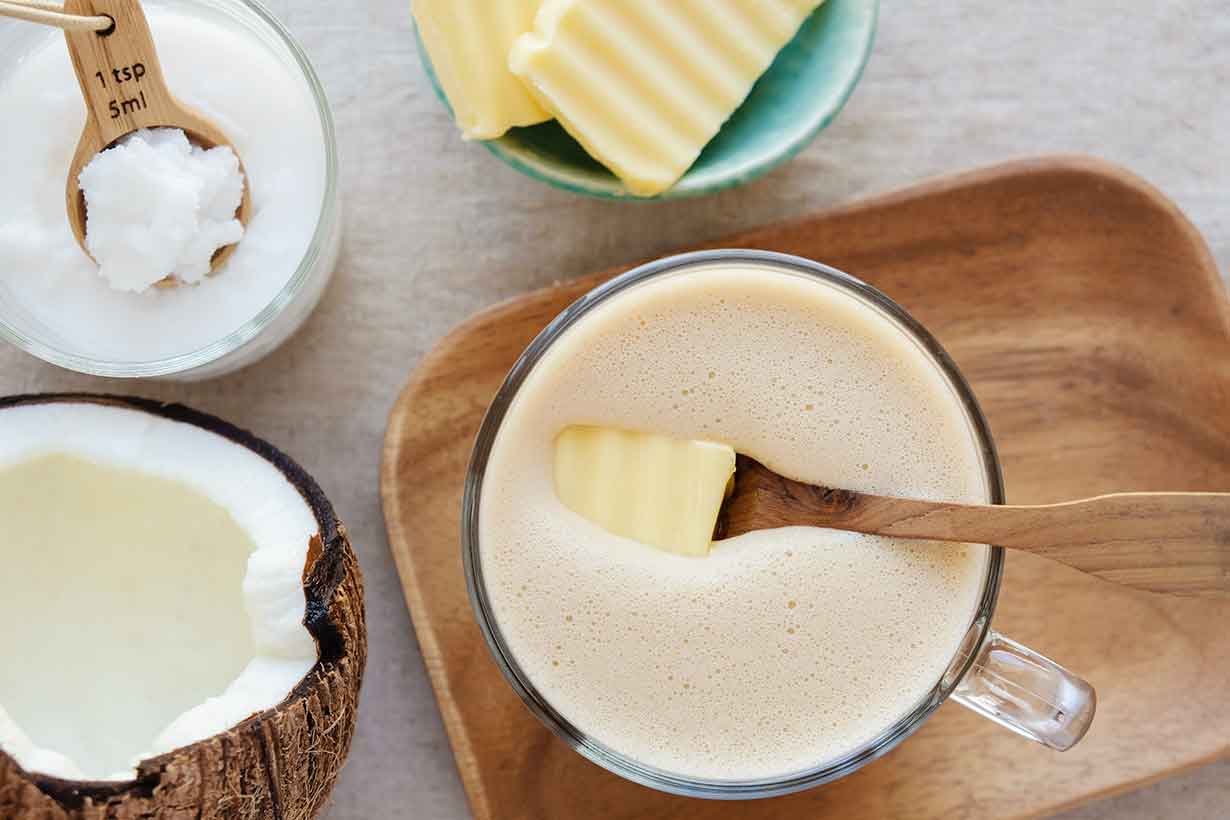
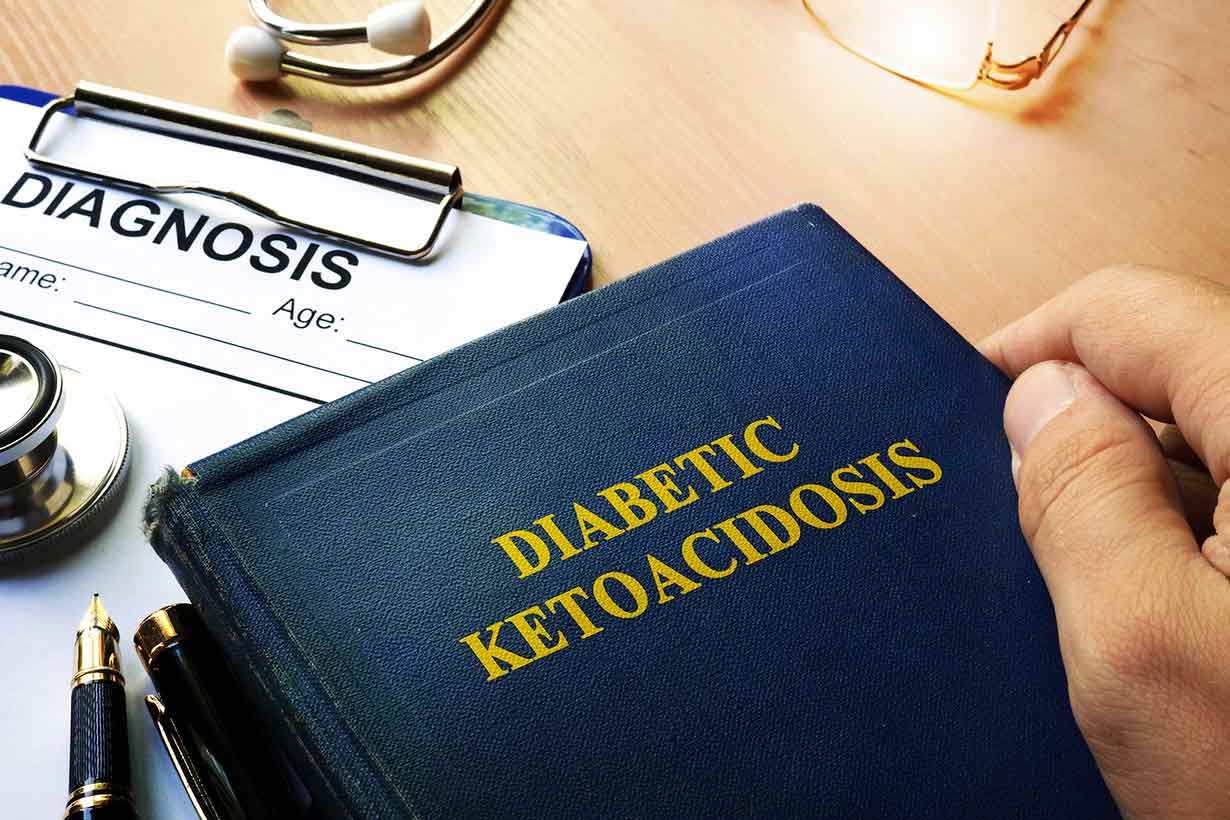
Very informative. Thank you. Much appreciated.
In the section above which states percentages, eg.
10% carbohydrate, 50% fat, 40% protein
5% carbohydrate, 80% fat, 15% protein
What is being measured? 10% of what?
By weight or calories or something else?
Cheers, Carl
Hi Carl,
The percentage ratios here refer to total energy intake.
For example, if someone is consuming 2000 calories per day and 50 grams are from carbohydrates (approx 200 calories), their diet would be ‘10% carbohydrate.’
Hope this makes sense!